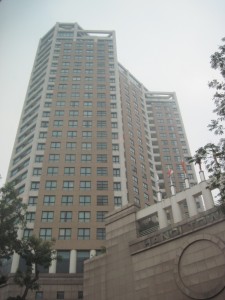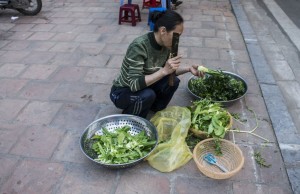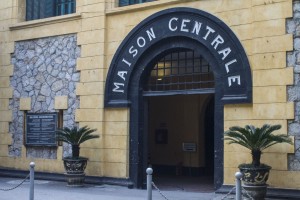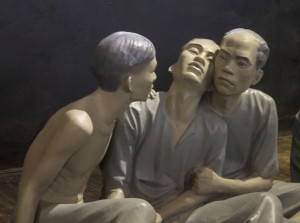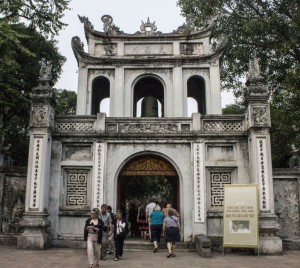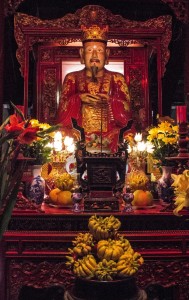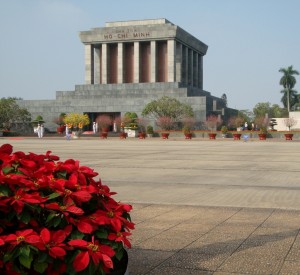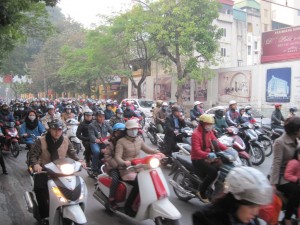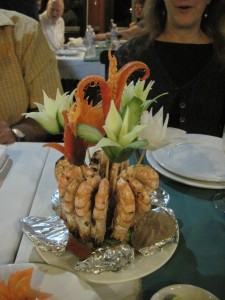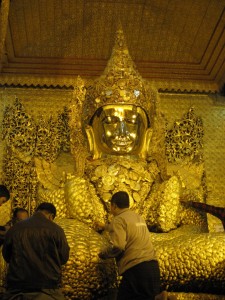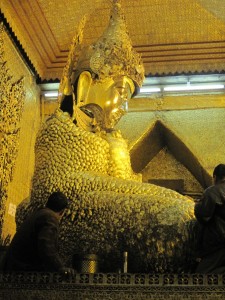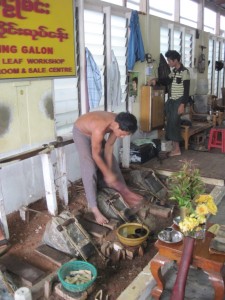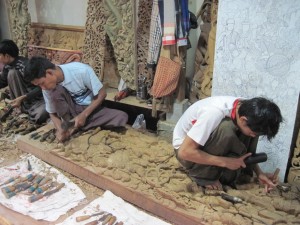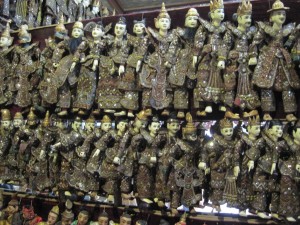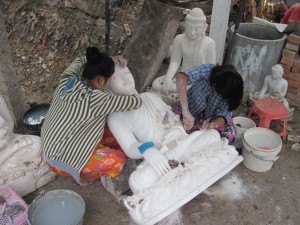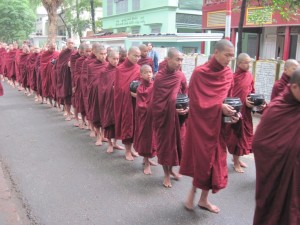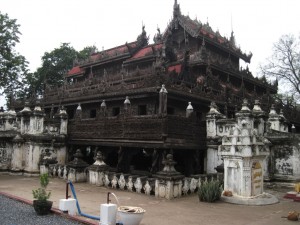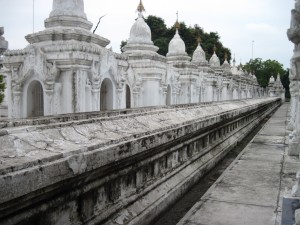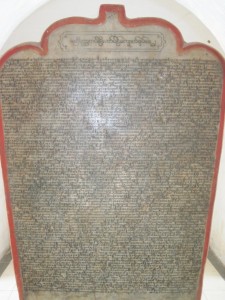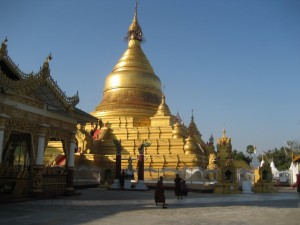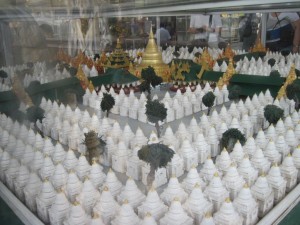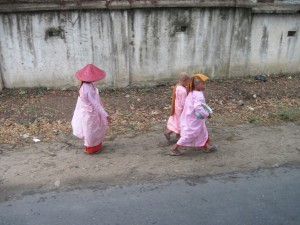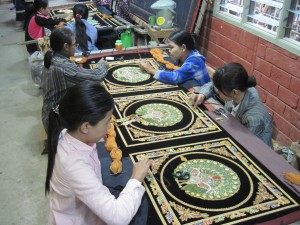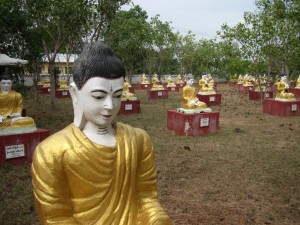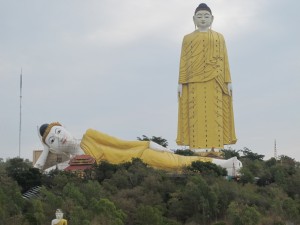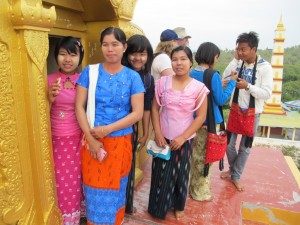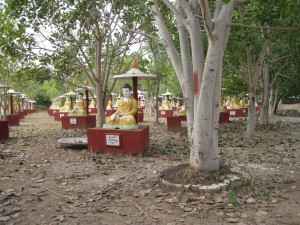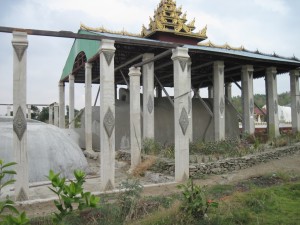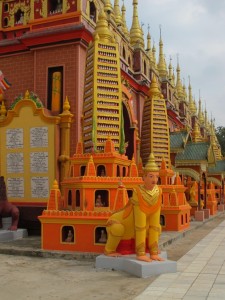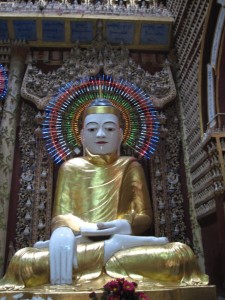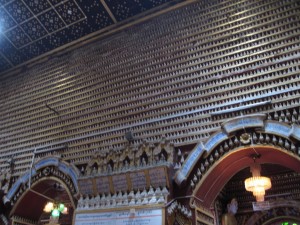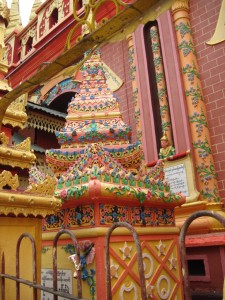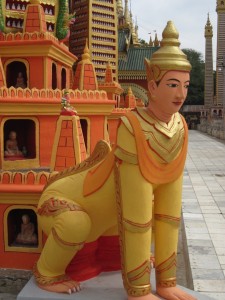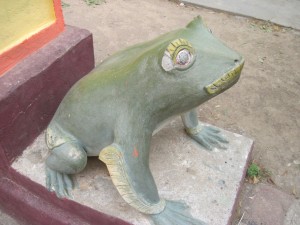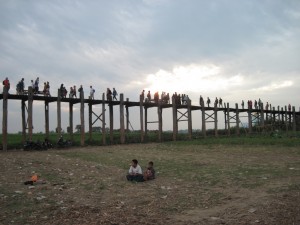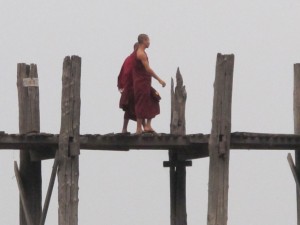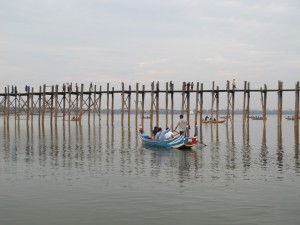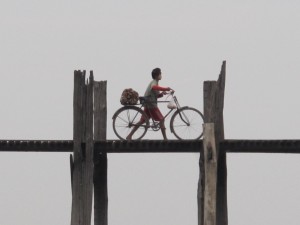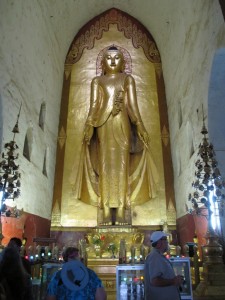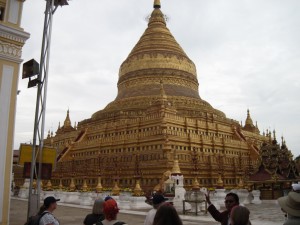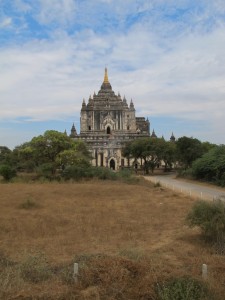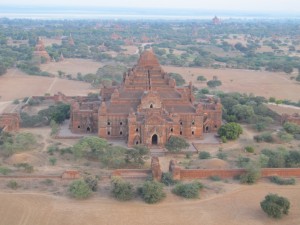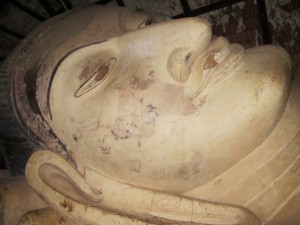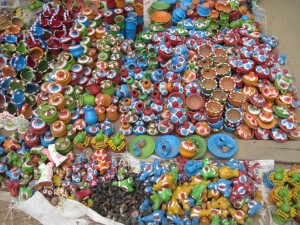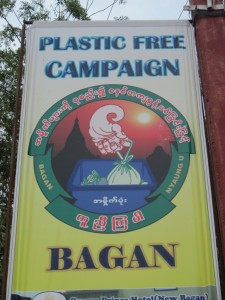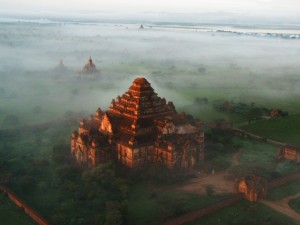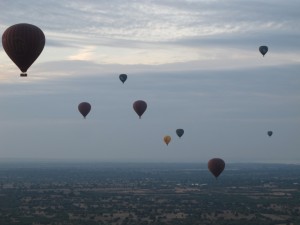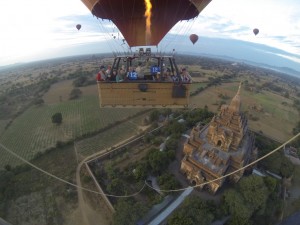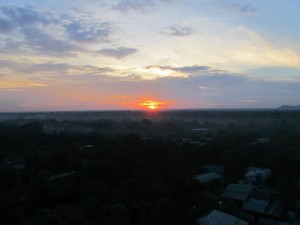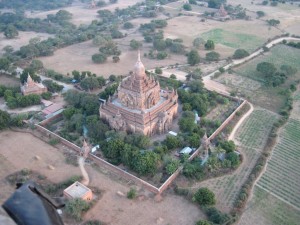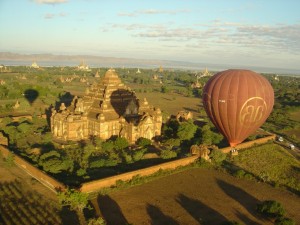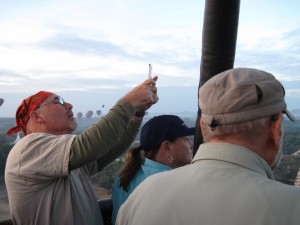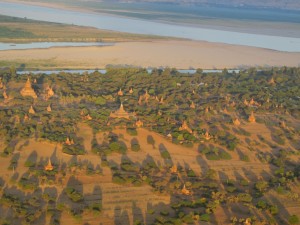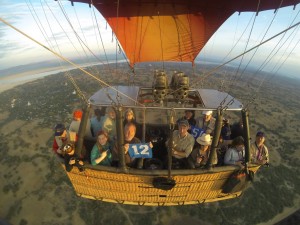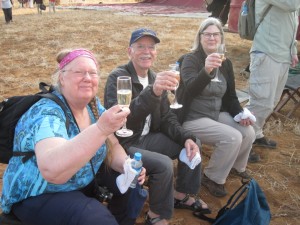Day 1 Myanmar – wow! Maia and I have experienced one of those kamakazi, intense, demanding, grinding travel days that was ultimately rescued in dramatic fashion by an amazing cultural connection experience – the Golden Rock Temple. It was one of those days that is so grueling that you constantly question your decision to plan/endure such an ordeal. But in the end, the payout is so spectacular; all discomforts of the journey are instantly forgotten. Better yet, they fade into that wonderful magical realm of the “great travel story” – which at its heart must always have a travel disaster. I often tell my tour members when they’ve had a catastrophic experience, that after the passage of time, their disaster will become a travel story they will tell over and over, and the pleasure derived from the tellings will easily tip the scale and become a favored, if not cherished, travel memory. Let’s call this - Coen’s Axiom; and its corollary – the worse the experience, the bigger the payout. Usually, it takes time for CA to work its magic, but Maia and I got that less common experience of instant karma (thanks John Lennon). But I’ve gotten way ahead of myself. We had to get to the Rock first.

We endured the typical trying “hurry up and wait” enervating journey to our destination. We survived a 12-hour flight, a frantic 45-minute connection, 6 hour flight, Myanmar immigration (smooth and easy), 2 hour wait, taxi to bus station, 1 hour wait in grubby, loud, peddler-filled developing world bus station, and finally 4 hour bus ride to Kyaikhtao. Upon our arrival at Kyaikhtao, the gateway town for the Golden Rock Temple, we happily departed our bus, booked our return bus, and headed for the final stage of our transportation “journey”.

One is transported up the steep, winding, mountain road to the temple in huge, converted industrial trucks. A cross between a flatbed and dumptruck, they’ve been tricked out with benches to sardine in 45-50 people per load. The loading bay is industrial scale too with about 6 loading stations – stepped metal platforms for loading.

Maia and I squeezed in and the adventure began. As we left the loading bay our truck rumbled under a big sign with the price and, I’m not making this up, the line “life insurance included”. A light bulb should have gone off right there. I’m not sure what it is about the Asian maindset, but they seem ALWAYS to be in a hurry when behind the wheel of a vehicle. For whatever reason, the trucks go racing up the mountain at breakneck speeds. Every bump (many) sends you off your bench a few inches and you return with a spine tingling whomp on the barely padded bench.

Our driver barely slowed before careening around hairpin curves and then powering up impossibly steep pitches. Maia decided it reminded her of the Indiana Jones ride at Disneyland – only this was the real deal! It was simultaneously wonderful and scary, a real adventure. I loved it and Maia quickly embraced the adventure quest aspects. For me, this is real travel – not the comfort of our tours, but real get-your-hands-dirty in the culture, rubbing elbows with the natives, no seatbelts in sight, connection travel - genuine Traveling with Intent. Wind-whipped and white knuckled, we arrived at a midway stopping station. The truck stops next to a platform and several people approach with alms bowls.

They make a pitch and people make donations, gaining merit in the Buddhist karmic cosmos. I thought it was extremely clever. I know after the death ride beginning, I was critically aware of my mortality and was in a proper mood for tending to my soul or karmic destiny. I tossed in a few hundred Kyat (40-45 cents) just to be on the safe side. Then it was on up the mountain. Impossibly, the road got steeper and narrower as we progressed. Every developing world adventure has to include some event that defies western understanding. We stopped no less than four times for the alms bowl breaks. It seemed like gross overkill and was almost comic when we stopped the fourth time. Oh well, at least it gave the locals a chance to sell us sweets, snacks, or home made toy guns (which seemed ironic on our way to a sacred site).

Finally we arrived at the temple complex. I fired off a quick prayer of thanks to the Buddha (where are those alms bowls now?) and what set off in search of our hotel. We found it easily, got checked in, and headed up to the Golden Rock itself. As we approached I realized how appropriate Maia’s Disneyland reference had been. It seemed appropriate to be conveyed on a Disney adventure ride to arrive at the temple.

The scene was equal parts Disney/Las Vegas and monastery/temple. Burmese Buddhists seem to love modern decorations for their shrines and Buddha statues. The preponderance of flashing lights, colored Christmas-style light strands, and radiating light Buddha halos made me feel like I was entering a disco rather than a temple. Huge crowds added to the carnival atmosphere. Thousands of pilgrims were coming or leaving. Most seemed to be in holiday spirits - lots of laughter and smiles. And ALL Burmese! I bet we saw fewer than a dozen westerners. Maia, with her blond hair, attracted lots of attention. We had our photos taken several time by beaming, bobbing Burmese.

The pseudo-carnival atmosphere actually added to the experience. You couldn’t fail to have your pulse quicken and adrenaline pump a bit. All the human energy was palpable and exciting. Every step toward the Golden Rock itself increased the anticipation and sharpened the spirit. Beyond the spectacle, there was also a genuine spiritual ambiance.

We removed our shoes and socks to enter the actual temple complex (best not to think about what you might step in). The outer courtyards were abuzz with animated supplicants, many of whom were sitting on mats having dinner or setting up to camp. And finally we ended up on a terrace with a view of the Golden Rock itself.

And it was amazing! Words fail. Probably 35-40 feet in diameter, the precariously balanced golden boulder is truly a sight to behold. It’s not hard to imagine why ancient Buddhists considered this a sacred spot – because only god could have placed/balanced/secured the stone in its place. It seems to defy gravity, balancing on the edge of eternity. The striking impression it makes is heightened by the stupa pinnacle on its dome and the thousands of worshipers and red-robed monks who are praying, lighting candles or lamps, chanting, or rubbing gold leaf onto the stone. Maia’s and my experience was augmented by the fact that our first glimpse was just after sunset. The sky was still streaked with some light but predominantly an angry dark purple. One couldn’t have asked for a more dramatic backdrop to the now illuminated gold orb. Truly breathtaking!
After soaking up the atmosphere and exploring various corners, angles, and views for taking lots of pictures we retreated back down the hill, retrieved our shoes, and sought out some dinner. It may be hard to understand if you’ve never encountered a milieu like this, but the experience was actually enhanced by the grueling ordeal of getting to our goal and the spectacle scene at the top. All memory of the miserable long bus ride and harrowing truck evaporated and only the transcendent glow of the temple experience remained. Real travel. Real Travel with Intent!





